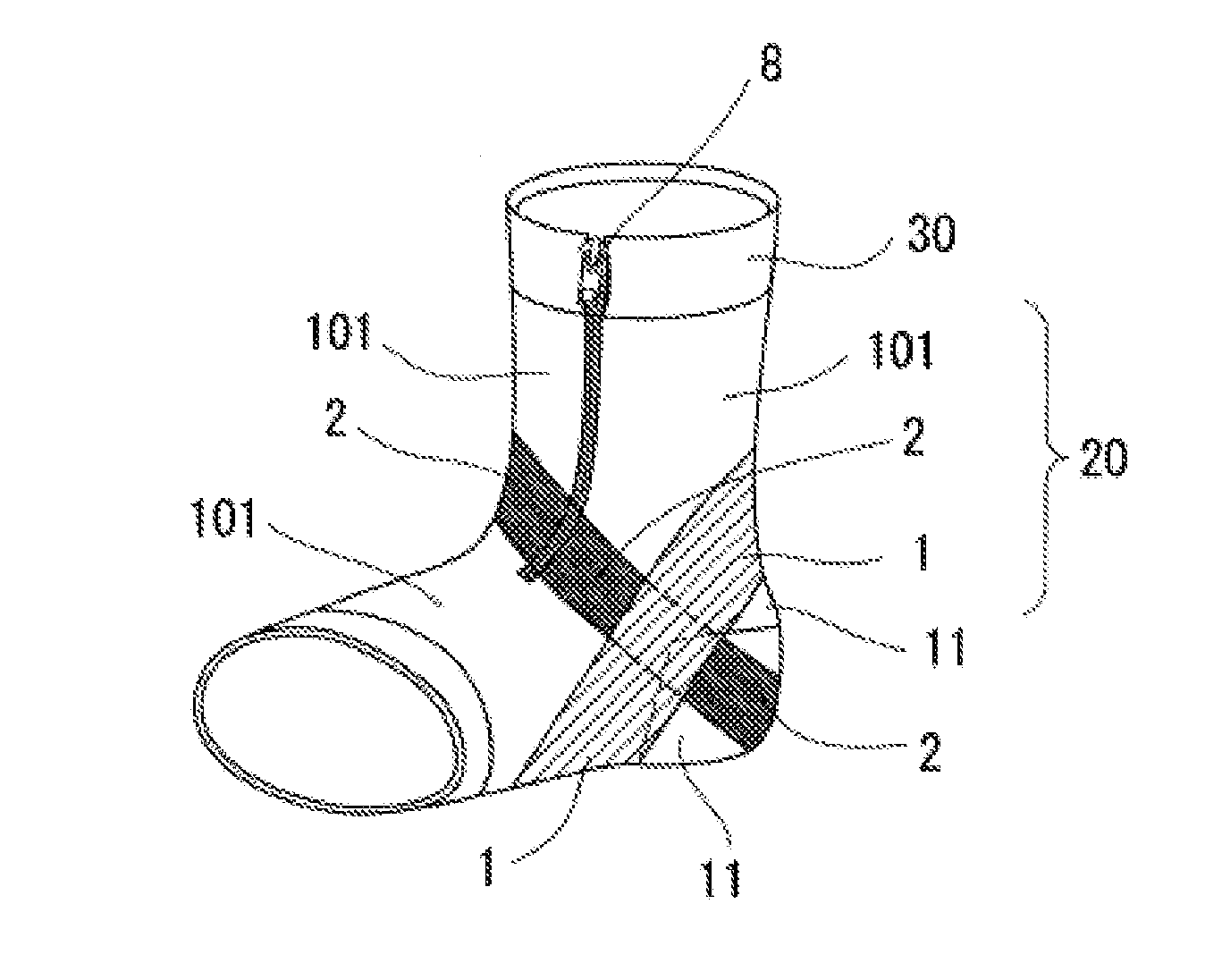Foot joint supporter
a supporter and foot technology, applied in the field of ankle supporters, can solve the problems of osteocartilage injury, often stretched or torn ligaments, etc., and achieve the effects of improving stability, improving the conformity of the talocrural joint, and reducing the risk of ankle sprain
- Summary
- Abstract
- Description
- Claims
- Application Information
AI Technical Summary
Benefits of technology
Problems solved by technology
Method used
Image
Examples
first embodiment
of the Invention
[0018]A right ankle supporter 100 will be described below with reference to FIG. 1. However, since the left ankle supporter 100 differs from the right ankle supporter 100 only in that the first elastic panel 1, second elastic panel 2, third elastic panel 3, fourth elastic panel 4, and fifth elastic panel 5 of the left ankle supporter are bilaterally symmetrical to those of the right ankle supporter, the left ankle supporter will not be shown in the drawings.
[0019]Further, in FIG. 1, a supporter with an open toe is shown as the ankle supporter 100, but a sock-type supporter with a closed toe bag may be used.
[0020]Further, the ankle supporter 100 may include a zipper 8 (a fastener) used to open and close the body 20 at the top as shown in FIG. 2, and a hook-and-loop fastener, lacing, or a magic belt (trademark) may be used instead of the zipper 8.
[0021]According to the embodiment shown in FIG. 1(a), the ankle supporter 100 surrounds at least the wearer's ankle with a b...
example
[0038]Next, we present an application of the theory described above to a subject wearing socks 100a produced by circular knitting according to the design of ankle supporter 100. FIGS. 3 to 5 are shown as references.
[0039]In the description below, the right sock 100a will be described with reference to FIGS. 3 to 5. Since the left sock 100a differs from the right sock only in that the knitted fabric positions of the first elastic panel 1, the second elastic panel 2, the third elastic panel 3, the fourth elastic panel 4, and the fifth elastic panel 5 are bilaterally symmetrical to those of the right sock 100a, the left socks will not be shown in the drawings.
[0040]According to the embodiment shown in FIGS. 3 and 4, sock 100a is produced on a sock knitting machine using knitting yarns including a front yarn, a rear yarn, and a rubber yarn. The sock-knitting machine used in this example was “Lambda Infini” (number of stitches: 144), manufactured by Murata Manufacturing Co., Ltd. Here, a...
PUM
 Login to View More
Login to View More Abstract
Description
Claims
Application Information
 Login to View More
Login to View More - R&D
- Intellectual Property
- Life Sciences
- Materials
- Tech Scout
- Unparalleled Data Quality
- Higher Quality Content
- 60% Fewer Hallucinations
Browse by: Latest US Patents, China's latest patents, Technical Efficacy Thesaurus, Application Domain, Technology Topic, Popular Technical Reports.
© 2025 PatSnap. All rights reserved.Legal|Privacy policy|Modern Slavery Act Transparency Statement|Sitemap|About US| Contact US: help@patsnap.com



